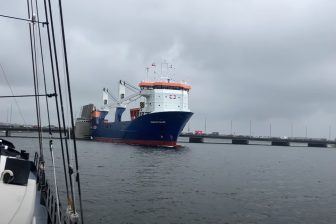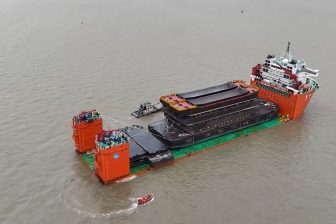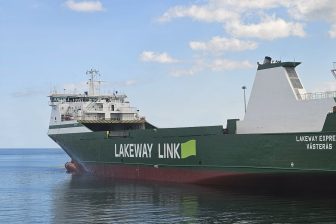
Alaskaborg pumped oil into the Atlantic for over 12 hours off the coast of Canada
The Dutch-flagged general cargo vessel Alaskaborg, owned by Wagenborg, pumped oil into the Atlantic Ocean for over 12 hours, the recent ruling by the Dutch Maritime Disciplinary Court confirmed. The court further found the captain of the vessel and the chief engineer at fault for the incident suspending their licenses for eight weeks each and fining both €2,000.
The decision was made on the grounds that both the captain and chief engineer failed to recognize the gravity of the situation in which the 2012-built vessel found itself in February last year. Namely, the vessel was sailing from Baie Comeau, Canada, on February 7, 2022, bound for Rotterdam.
The cargo consisted of crushed carbon anodes divided between the two holds. While loading the Alaskaborg, it was snowing hard. While loading hold one, it snowed less than whilst loading hold two.
On February 9, 2022, an alarm went off in the bilge well portside forward in hold two. At the time, the vessel was sailing south of Newfoundland, with the captain and chief engineer concluding the cause for the alarm was the melting snow or water ingress. Due to the conditions, it was decided not to go into the hold for inspection and the bilge ejector was activated and kept on until the weather improved. The bilge ejector remained turned on for over 12 hours. However, upon inspection, it was obvious that a hole in the fuel tank 7SB was the reason for the alarm going off.
This also meant that oil went into the cargo hold and into the bilge well portside fore, and subsequently ended up overboard. Upon later calculations, it was established that the vessel lost 54.7 cbm of VLSFO (Very Low Sulphur Fuel Oil), part of it ending up in the Atlantic. Canadian Coast Guard at the time of the incident reported that some 30,000 litres of VLFSO ended up in the ocean.
The leak was caused by the damage to the fuel tank with the lashing rings of a between decks hatch breaking and the hatch falling into the hold piercing the tank.
You just read one of our premium articles free of charge
Register now to keep reading premium articles.




